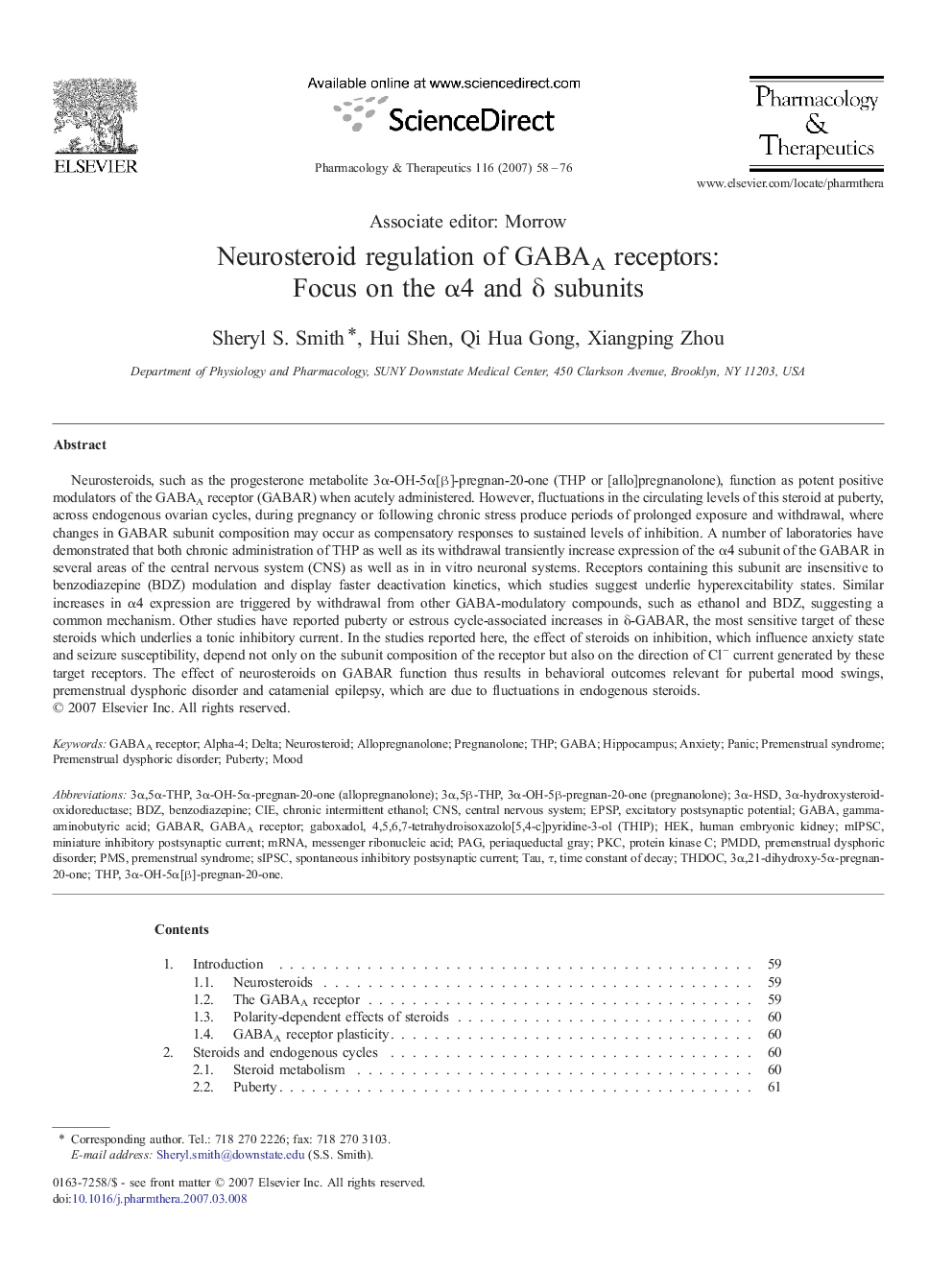| Article ID | Journal | Published Year | Pages | File Type |
|---|---|---|---|---|
| 2564274 | Pharmacology & Therapeutics | 2007 | 19 Pages |
Neurosteroids, such as the progesterone metabolite 3α-OH-5α[β]-pregnan-20-one (THP or [allo]pregnanolone), function as potent positive modulators of the GABAA receptor (GABAR) when acutely administered. However, fluctuations in the circulating levels of this steroid at puberty, across endogenous ovarian cycles, during pregnancy or following chronic stress produce periods of prolonged exposure and withdrawal, where changes in GABAR subunit composition may occur as compensatory responses to sustained levels of inhibition. A number of laboratories have demonstrated that both chronic administration of THP as well as its withdrawal transiently increase expression of the α4 subunit of the GABAR in several areas of the central nervous system (CNS) as well as in in vitro neuronal systems. Receptors containing this subunit are insensitive to benzodiazepine (BDZ) modulation and display faster deactivation kinetics, which studies suggest underlie hyperexcitability states. Similar increases in α4 expression are triggered by withdrawal from other GABA-modulatory compounds, such as ethanol and BDZ, suggesting a common mechanism. Other studies have reported puberty or estrous cycle-associated increases in δ-GABAR, the most sensitive target of these steroids which underlies a tonic inhibitory current. In the studies reported here, the effect of steroids on inhibition, which influence anxiety state and seizure susceptibility, depend not only on the subunit composition of the receptor but also on the direction of Cl− current generated by these target receptors. The effect of neurosteroids on GABAR function thus results in behavioral outcomes relevant for pubertal mood swings, premenstrual dysphoric disorder and catamenial epilepsy, which are due to fluctuations in endogenous steroids.
